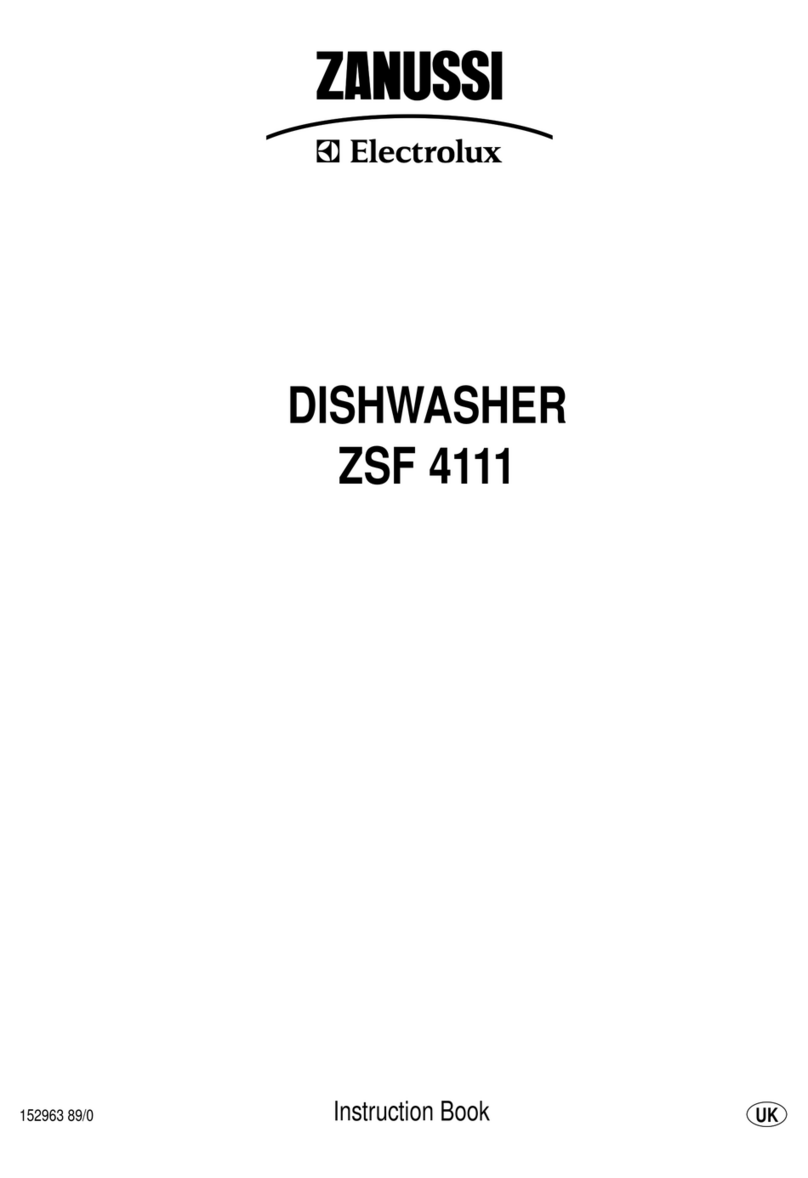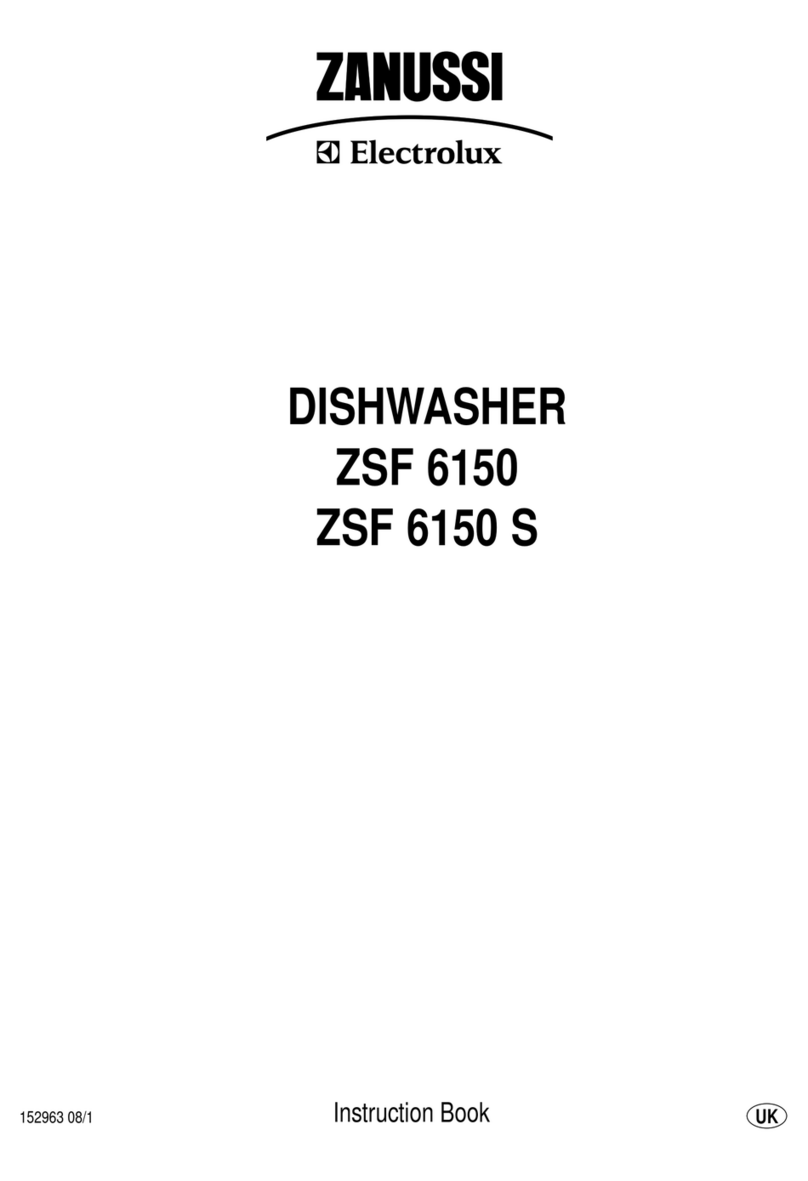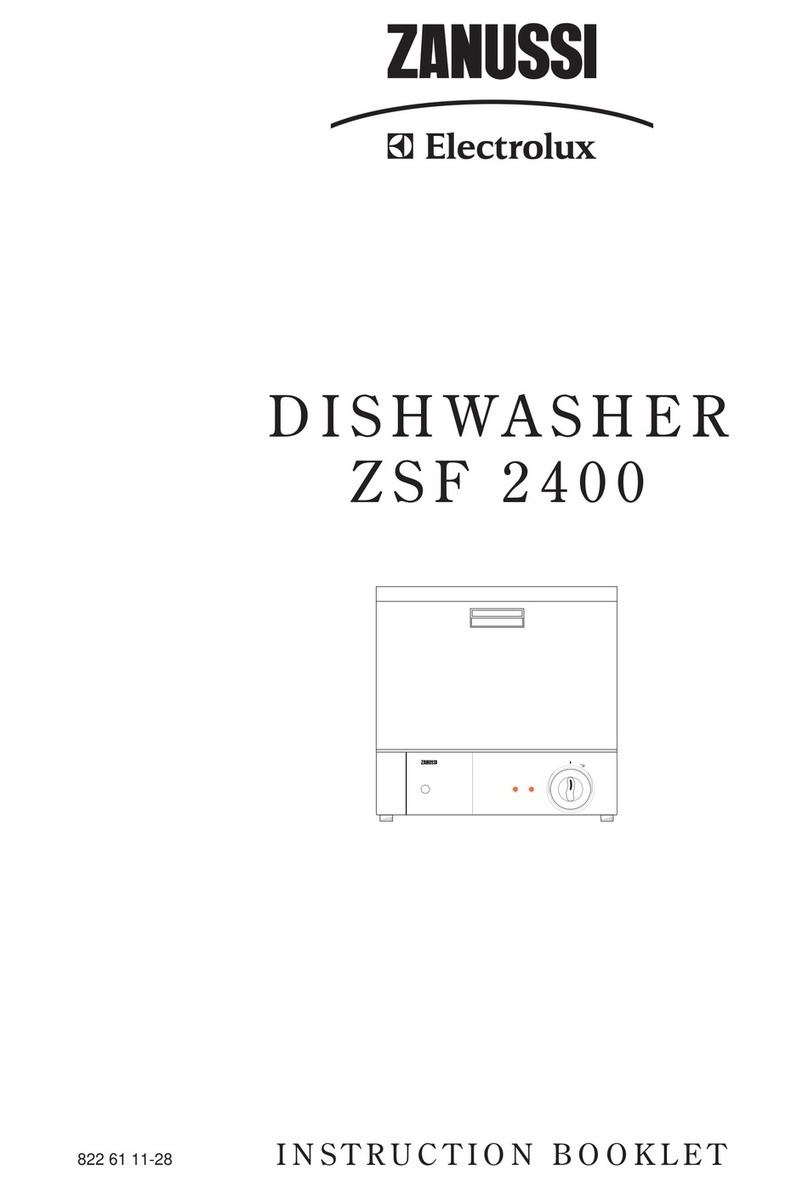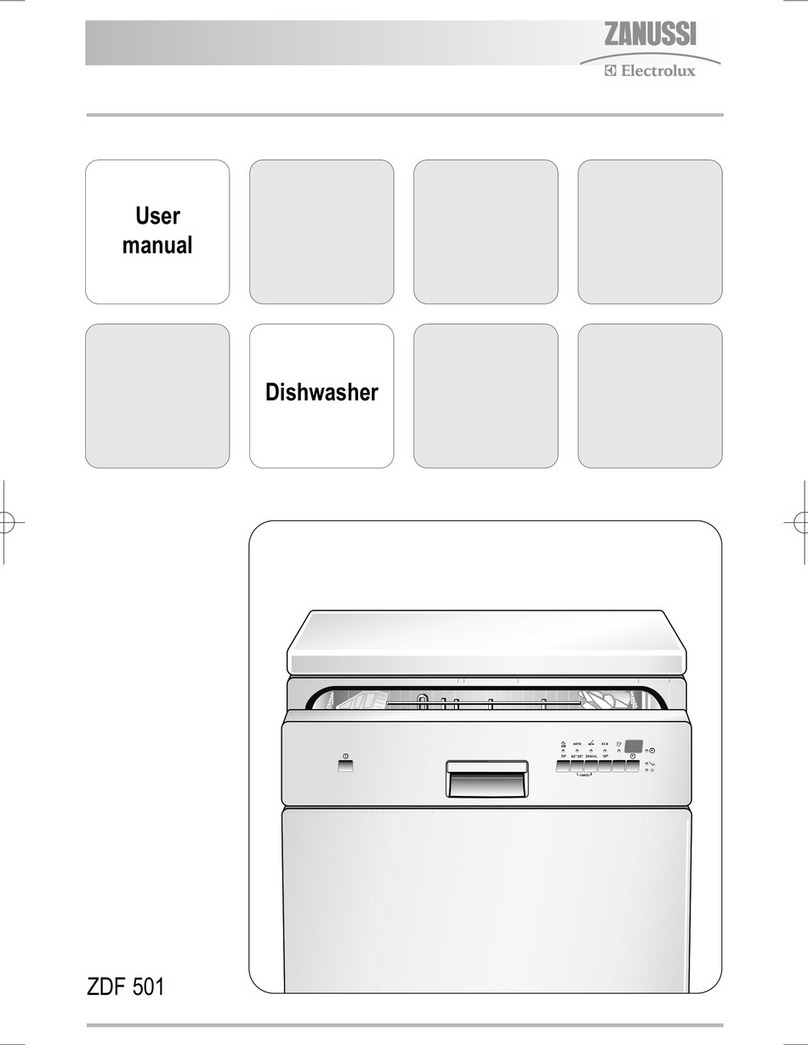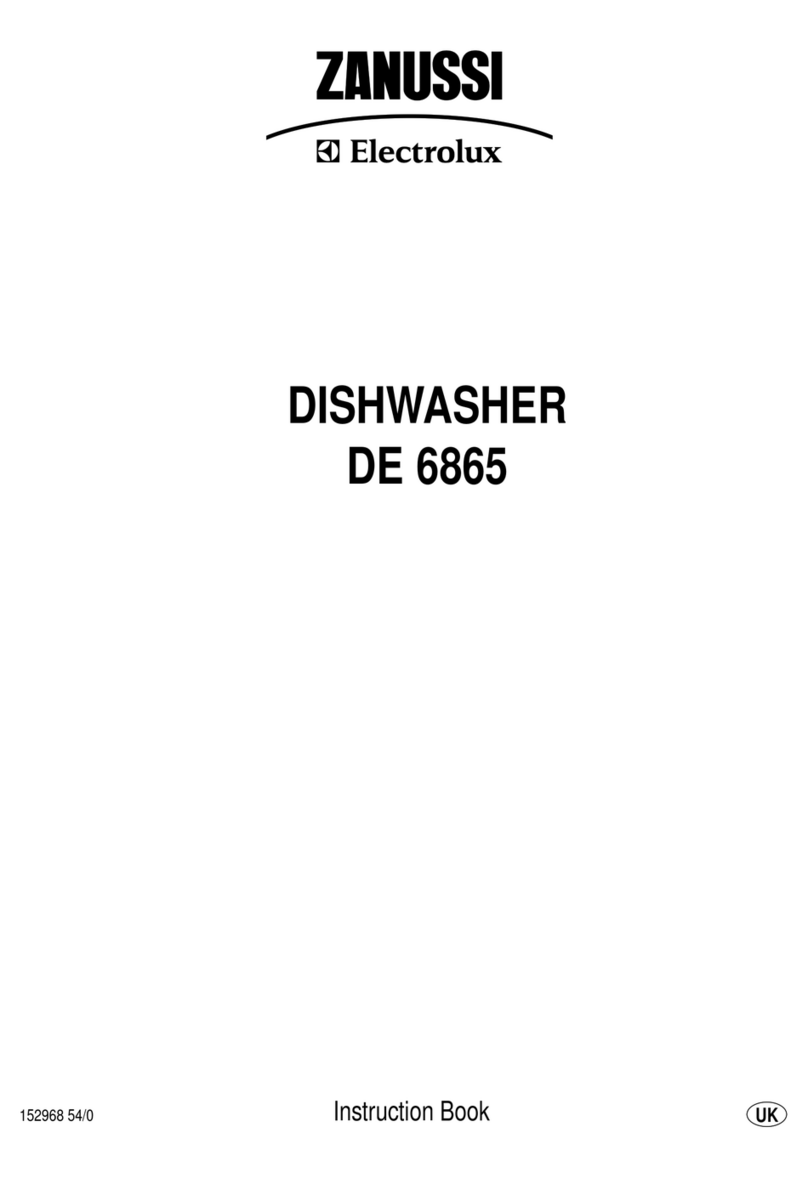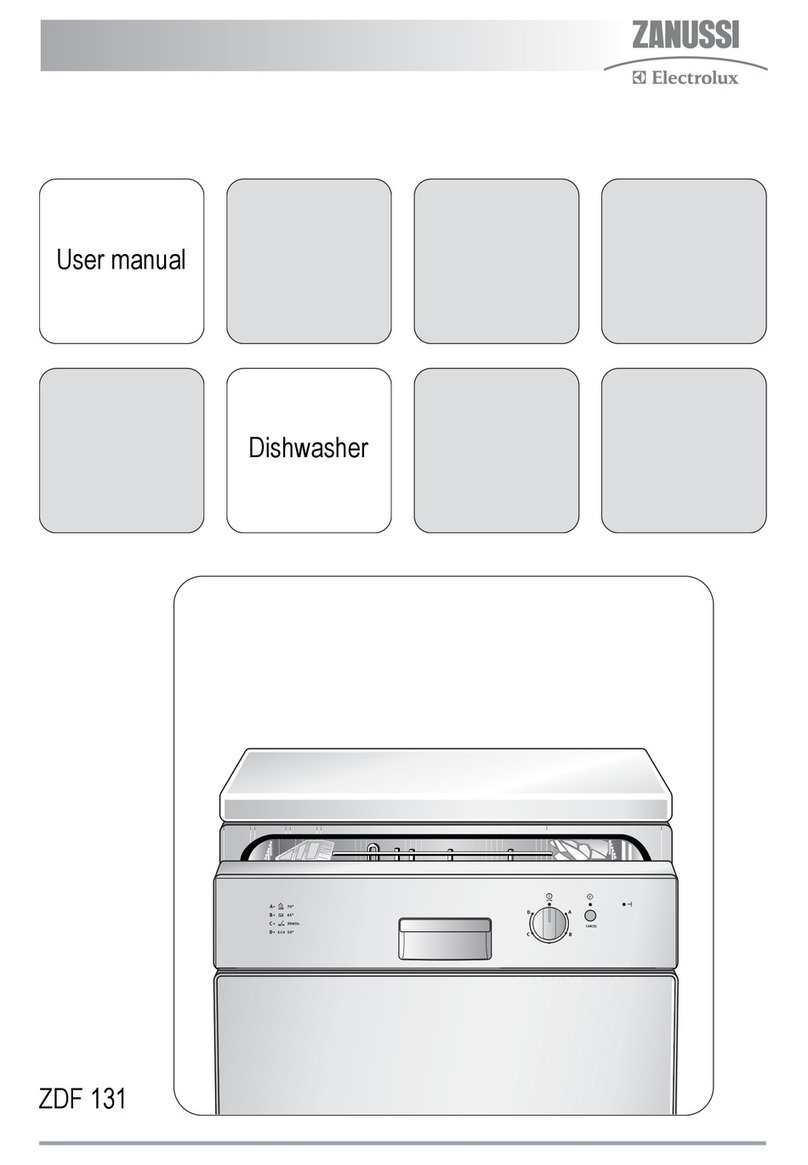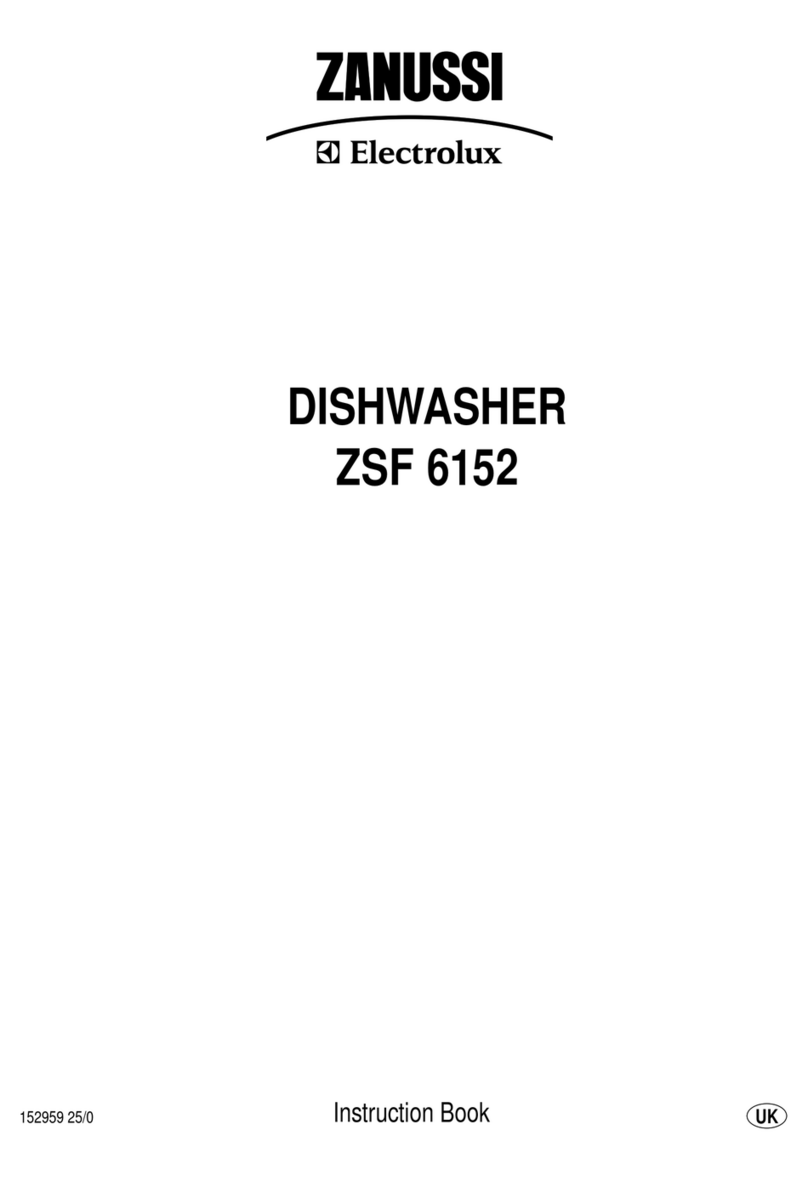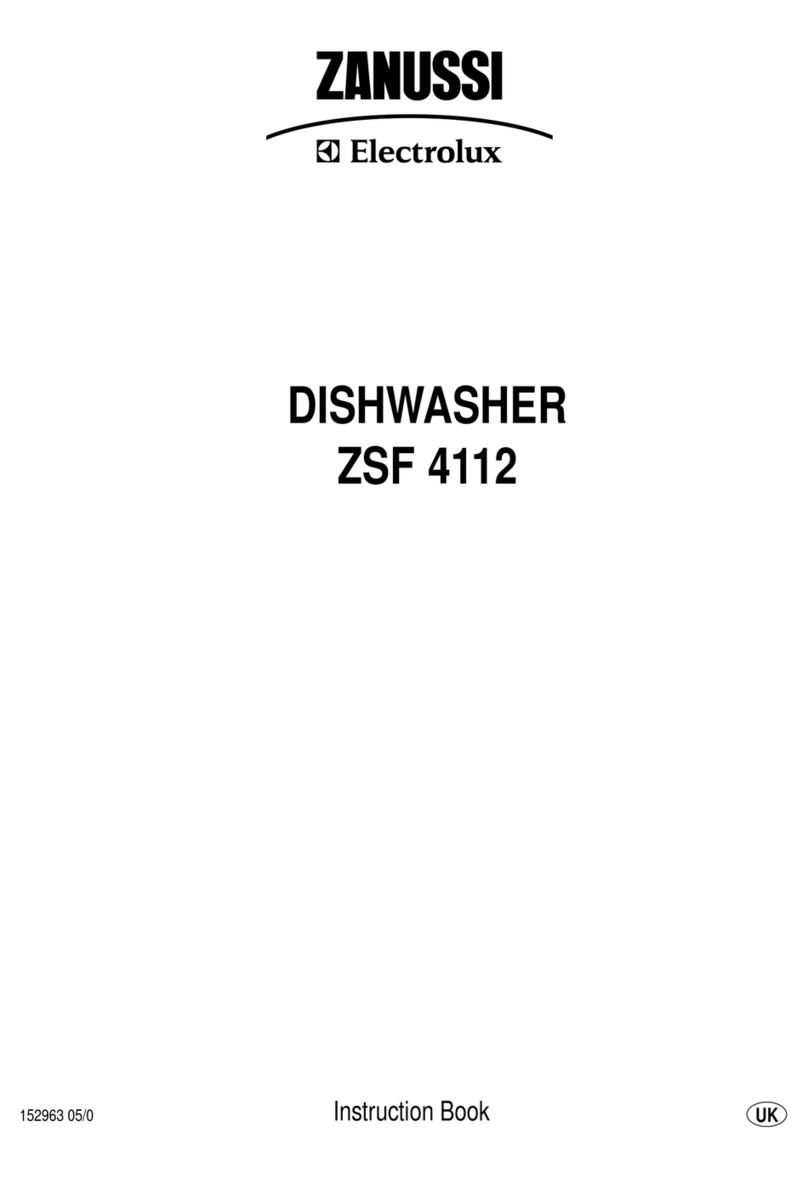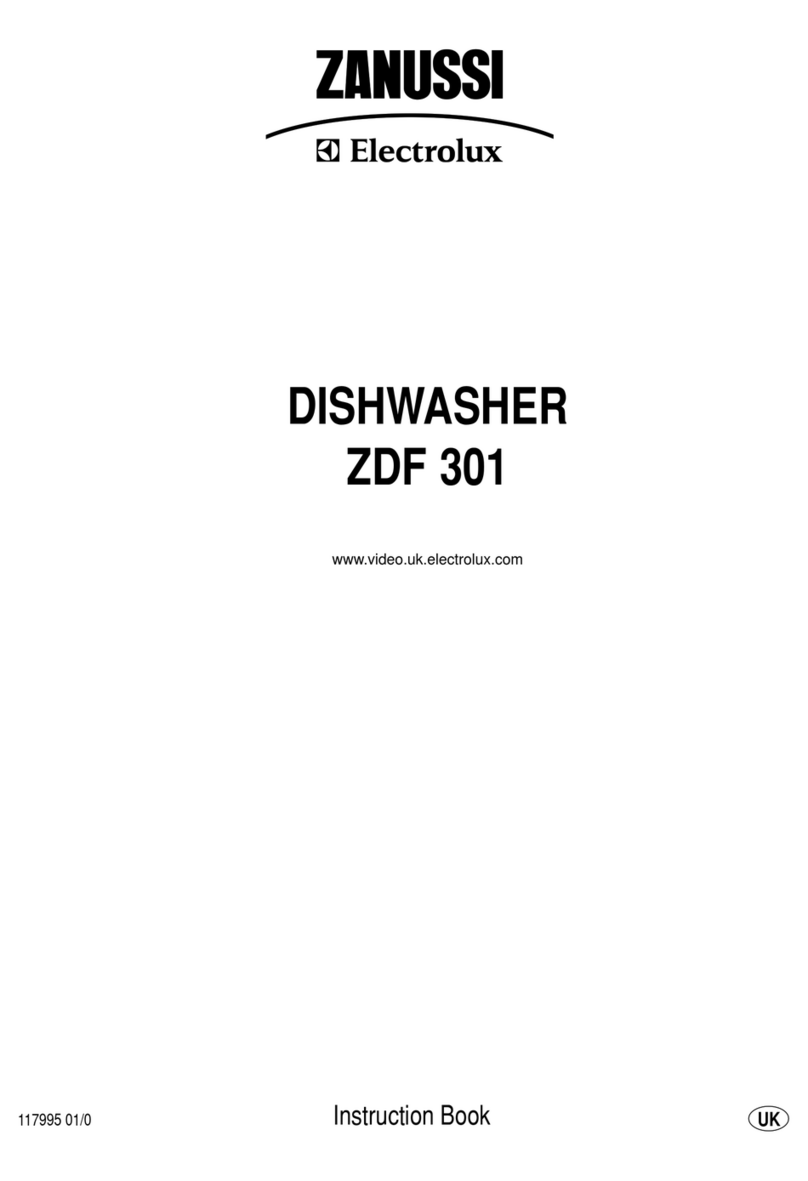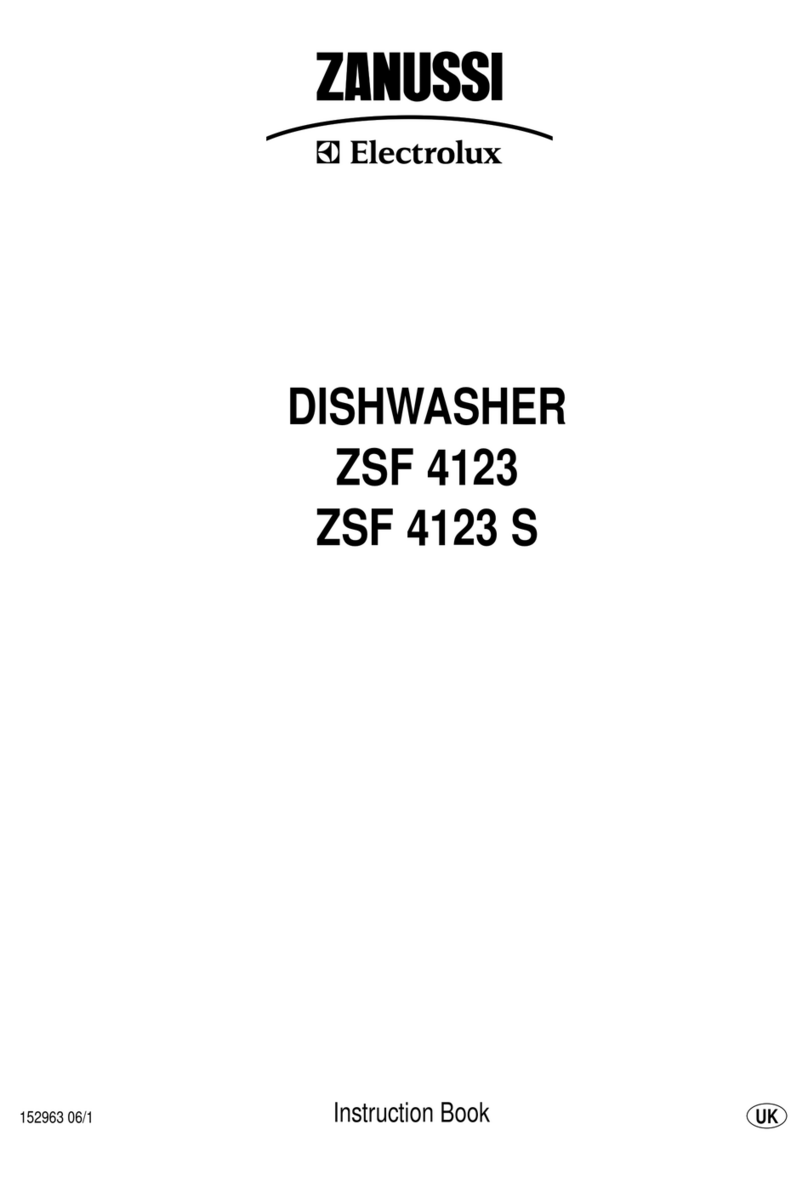3
It is most important that this instruction book should be retained with the appliance for future reference. Should the
appliance be sold or transferred to another owner, or should you mo e house and lea e the appliance, always ensure that
the book is left with the appliance in order that the new owner can get to know the functioning of the appliance and the
rele ant safety information.
This information has been pro ided in the interest of your safety. You MUST read it carefully before installing or using the
appliance.
Installation
●Check your dishwasher for any trans ort damage. Never
connect a damaged machine. If your dishwasher is
damaged, you should contact your su lier.
●For safety reasons it is dangerous to alter the s ecifications
or attem t to modify this roduct in any way.
●Any electrical and lumbing work required to install this
a liance should be carried out by a qualified and
com etent erson.
●Care must be taken to ensure that the a liance does not
stand on the electrical su ly cable.
●The sides of the dishwasher must never be drilled to
revent damage to hydraulic com onents.
Child safety
●This a liance is designed to be o erated by adults.
●Children should not be allowed to tam er with the controls
or lay with the roduct.
●Packaging arts may be dangerous for children, who could
even be suffocated! You should therefore kee all
ackaging well away from children.
●The water in your dishwasher is not for drinking. Detergent
residues may still be resent in your machine. Kee
children well away from your dishwasher when the door is
o en.
●Kee all detergents in a safe lace out of children's reach.
Your dishwasher in day-to-day use
●Items that are contaminated by etrol, aint, steel or iron
debris, corrosive, acidic or alkaline chemicals must not be
washed in this dishwasher.
●Under no circumstances should you o en the door whilst
the a liance is in o eration, es ecially during the washing
hase, hot water may esca e. However, if the door is
o ened, a safety device ensures that the machine sto s.
●Only use roducts (detergent, salt and rinse aid) s ecifically
designed for use in dishwashers.
●Long bladed knives stored in an u right osition are a
otential hazard.
●Long and/or shar items of cutlery such as carving knives
must be ositioned horizontally in the u er basket.
●Ensure that the door of the dishwasher is always closed
when it is not being loaded or unloaded. In this way you will
avoid anybody tri ing over the o en door and hurting
themselves.
●When finishing loading or unloading close the door, as an
o en door can be a hazard.
●Do not sit or stand on the o en door.
●Isolate the a liance from the ower su ly and turn off the
water su ly after use.
●This roduct should be serviced by an authorised service
engineer, and only genuine s are arts should be used.
●Under no circumstances should you attem t to re air the
machine yourself. Re airs carried out by inex erienced
ersons may cause injury or serious malfunctioning.
Contact your local Service Force Centre. Always insist on
genuine s are arts.
Disposal
Dis ose of the dishwasher ackaging material correctly.
All ackaging materials can be recycled.
Plastic arts are marked with standard international
abbreviations:
>PE< for olyethylene, e.g. sheet wra ing material.
>PS< for olystyrene, e.g. adding material (always CFC-
free).
>POM< for olyoxymethylene, e.g. lastic cli s.
Cardboard ackaging is manufactured from recycled a er
and should be de osited in the waste a er collection for
recycling.
As and when you cease to use your dishwasher and withdraw
it from service, your should render it unserviceable before
having it dis osed of.
Warning! Children at lay could lock themselves in your
dishwasher or otherwise endanger their lives. Therefore cut off
the ower su ly cable and make the door closing device
unusable to revent children from being tra ed inside.
For the dis osing of the a liance lease take it to a recycling
centre or to your dealer who may, for a small contribution to
the costs, dis ose it for you.
Economical and
ecological dishwashing
●Ensure that the water softener is correctly adjusted.
●Do not re-wash under running water.
●Select the wash rogramme to suit the nature and degree of
the soiling on the dishes.
●Do not use more detergent, dishwasher salt and rinse aid
than is recommended in these o erating instructions and by
the manufacturer of the res ective roduct.
Safety instructions
